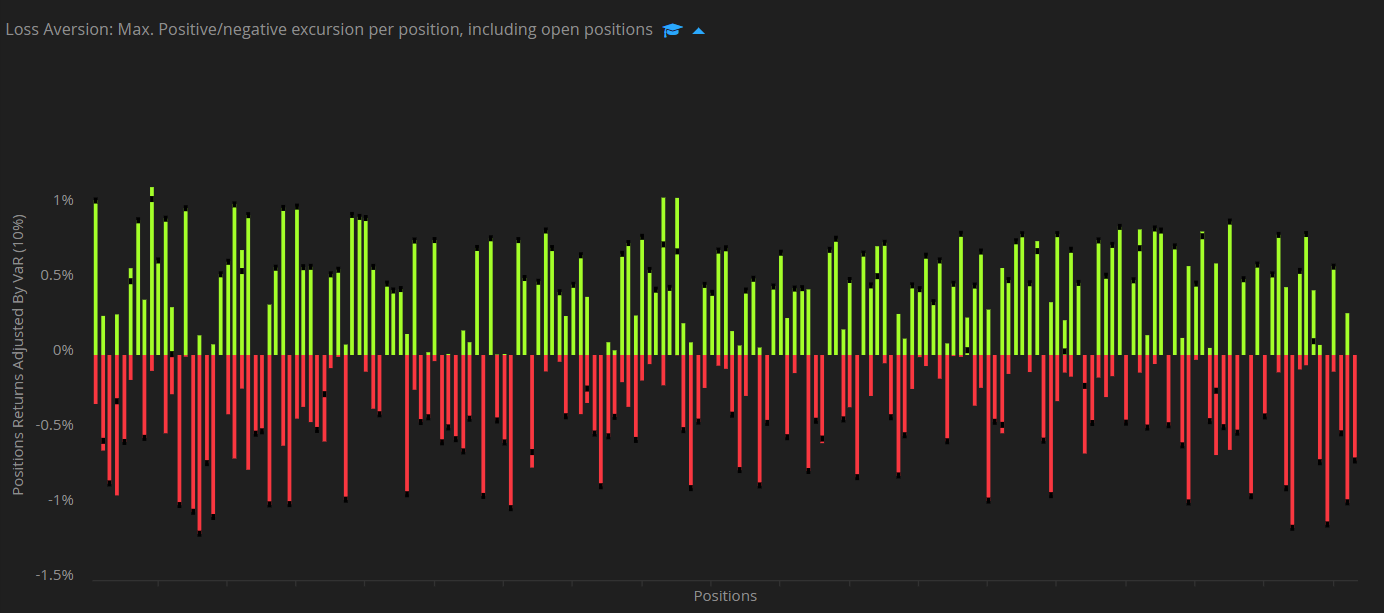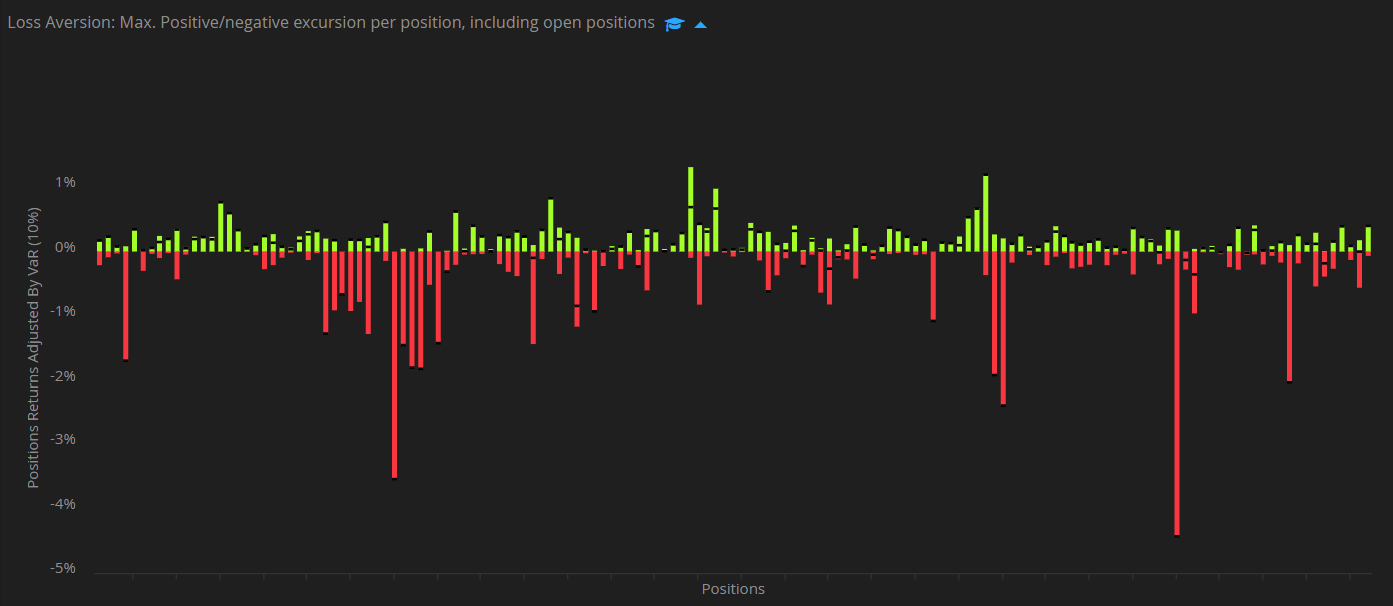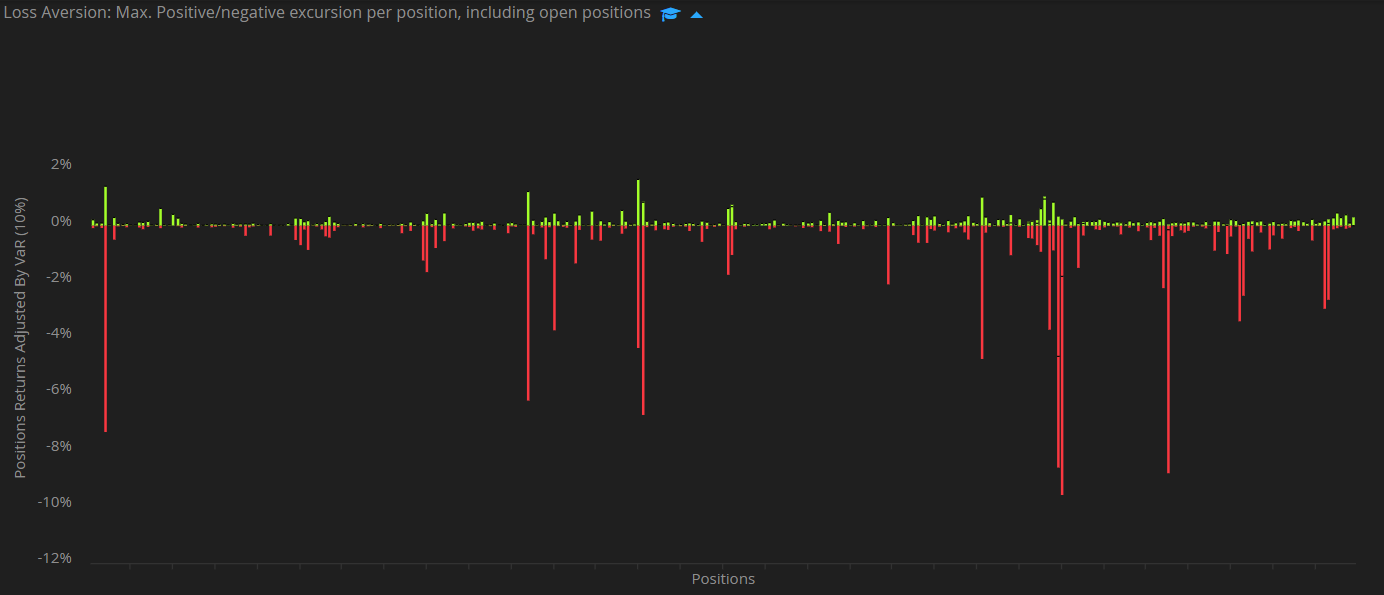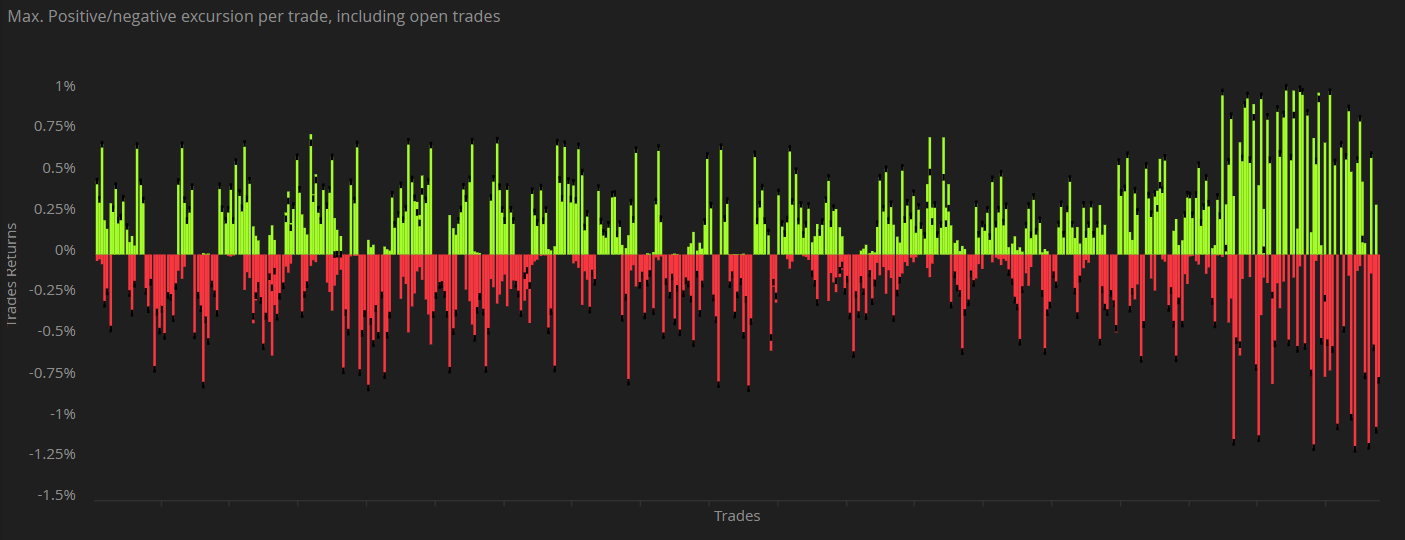What does the Loss Aversion (La) Attribute tell about a trading strategy / DARWIN?
Loss aversion (La) evaluates whether a trading strategy exhibits symmetric behavior independently of whether a position is winning or losing.
What is it?
The Loss aversion Attribute (La) evaluates whether a trading strategy exhibits symmetric behaviour independently of whether a position is winning or losing.
Many traders demonstrate an inability to close losing positions, often accumulating significant losses in the forlorn hope that the market will reverse course. These same traders often exhibit a tendency to close winning positions too early, prematurely taking profits.
When a trader lets losses run and closes winning positions quickly, they are said to suffer from the well known cognitive bias called loss aversion*.
*In economics and decision theory, loss aversion refers to people's demonstrated tendency to prefer to avoid monetary losses rather than acquiring equivalent gains.
Darwinex considers this behavioural bias extremely dangerous, especially if it is combined with significant levels of leverage.
The Loss Aversion (La) attribute is scored from 0-10 and takes into account the last 3 D-Periods of Experience (Ex).
Where can I see information related to La?
As with the rest of the Investable Attributes, you can access La information for a DARWIN via the icons in the top right of the DARWIN profile,

or by clicking through the ["Investable Attributes" / "La"] path within the DARWIN profile.

In this graph you can see all historic positions in an individual asset over the course of a trading strategy's life.
Plotted on the Y-Axis we can see the % return related to the position:
- Maximum negative excursion
The depth of the red bars indicates the maximum unrealised percentage loss incurred in an open position in a given asset
- Maximum positive excursion
The height of the green bars indicates the maximum unrealised percentage gain incurred in an open position in a given asset
- Actual position close level
Within the red or green bar for a given position, the black horizontal line delimits the position at which the position was actually closed and therefore represents the percentage realized return of the position.
As outlined above, the La Attribute evaluates whether an asymmetry exists between the behaviour of the trader when faced with winning positions or losing positions.
If the depth of the red bars is consistently greater than the height of the green bars, it can clearly be said that the trader suffers from loss aversion.
The better the positive excursions (green bars) with respect to the negative excursions (red bars) the better the La score the trader will receive and viceversa.
Examples of La scores
Although final investment decisions are down to each individual investor, Darwinex strongly recommends paying close attention to the La score.
In fact, we would go so far as to say that DARWINs with low La scores are not particularly investable.
Let's look at some examples:
- Good La score
In this graph we have a DARWIN with an excellent La score of 9.8.
You can see that this trader unequivocally does not suffer from La as he lets his winning positions run much more than he does his losing positions.
.png)
- Bad La score (Example 1)
The DARWIN in this graph has an La score of just 1.6.
Why?
Unlike in the previous example, we can see a clear preponderance of red.
We can observe that the trader may work with a maximum loss of in and around 4% but the size of the negative excursions is 3-4 times larger than those of the positive excursions.
This type of strategy with a low reward / risk ratio often combines with a high % of winning trades.
Nevertheless, when this type of loss aversion is combined with substantial leverage it can often lead to the account blowing up in short order.
NOTE: A DARWIN replicates trading strategies at a maximum 6.5% monthly target VaR controlled by our Risk Engine, meaning that while a trader may blow up his account and lose 100% of this equity, losses in the DARWIN should be considerably more limited.

- Bad La score (Example 2)
In this last example, the DARWINs La score is a disastrous 0.2.
Not only is there a much higher preponderance of red, but we can also see that on some occasions the maximum negative excursion is in excess of 9%.
This is a clear example of a trader who is unable to use stop-loss for whatever reason and is simply incapable of managing losses.

Tips
1. "La" evolution through time
Darwinex uses the last 3 D-Periods of Experience (Ex) to calculate the La score as we consider that the most recent behaviour is the most relevant indicator.
Nevertheless, it is interesting to observe how a trader's La has evolved through time, since it is quite possible that someone who has gone through about of La before, may well do so again.
In order to see the evolution of La through time, from within the DARWIN profile follow the ["Investable Attributes" / "D-Score" / "La"] path.

In the example above, La is represented by the blue line.
We can see that while this trader has a good current score, he has previously gone through two periods where his La score has declined substantially.
In this scenario, it would be important to keep an eye out for any signs that the trader loss aversion may be returning.
2. Position Excursion vs Trade Excursion
Within the La section, Darwinex displays maximum positive and negative excursions per position, but you can also see maximum positive and negative excursion per trade in the "Assets and Timeframes" section of the DARWIN or Underlying Trading Strategy.

3. DARWIN Excursions vs Underlying Strategy Excursions
When looking at a DARWIN, the excursions reflected in the red and green bars are risk adjusted to maximum 6.5% monthly VaR.
In the traders Underlying Strategy - within the Assets & Timeframes section -you can see the excursions per individual trade with the real risk assumed by the trader in his own account.

Want to know more?
If you want to learn more about the La attribute, we recommend listening to the Introduction to the Investable Attributes webinar. Juan Colón talks about La from minute 21.45.